|
Sidney James SETON
Born 15th October 1892 – Drowned at Sea 1st January 1915 |
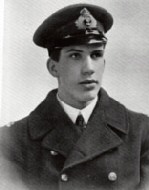
Sidney was the eldest son of James Henry and Alice Seton. The family lived at 40 Ferndale Road, Clapham. Sidney’s father was a heraldic engraver with a business in Brewer Street W1 and customers including Queen Victoria and members of foreign royal households. James was also a volunteer in public service serving in the Special Constabulary in the Trafralgar Square riots of 1887. The family was of proud Scottish descent with Lieutenant Colonel Alexander Seton, the hero of the wreck of the ‘Birkenhead’, a notable forbear. Father James however died in 1902 aged only 32 and leaving Sidney’s mother a widow with three sons – Sidney, Frederick and youngest George all under ten years. 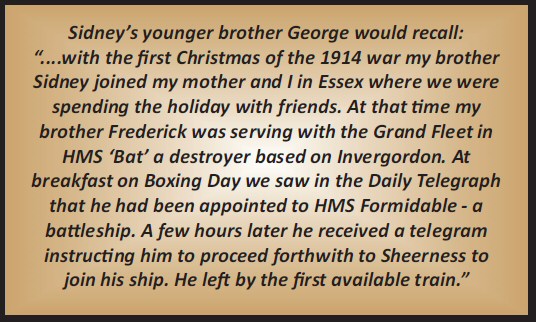 Sidney won a scholarship and was a boarder at Bancrofts School. While at school Sidney took part in a number of theatrical productions including playing the role as gaoler in the Merchant of Venice 1909 and ‘Starveling’ in the 1908 production of Midsummer Nights Dream. Sidney was good at mathematics and after leaving school initially gained employment as a civil service clerk within the Board of Trade. Sidney must have been a significant source of income for the household. In June 1912 Sidney secured a post as a clerk in the India Department of Coutts the royal bankers at their offices at 440 Strand, London. He was one of a number of ‘old boys’ employed by Coutts. His starting salary was £100 a year rising to £116 by 1914 whhen his employers annual assessmment described Sidney as – “Very promising. Good writer. Intelligent very satisfactory. A most promising man. Industrious and intelligent. Good writing and appearance.” Sidney’s career path was becoming well-established. 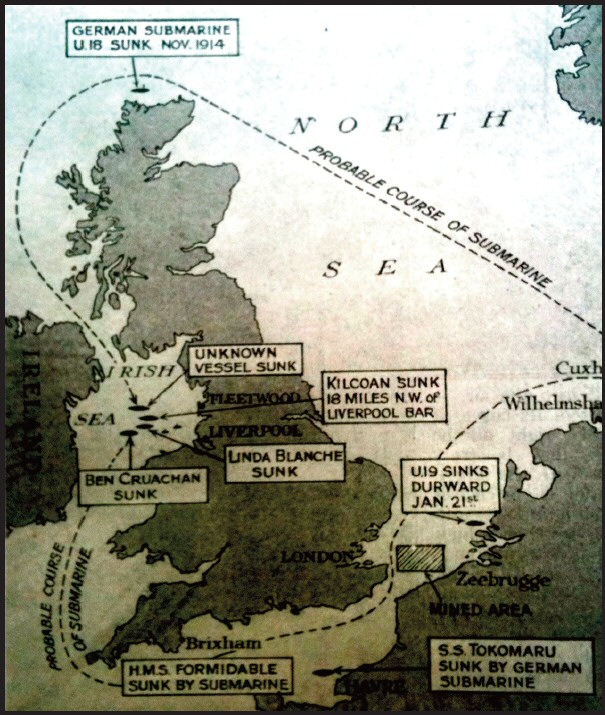 On 23rd February 1914 he enlisted in the 15th Battalion of the London Regiment in company with a friend and fellow boarder of his from school Arthur Reginald Holt. He was a little over 21 years of age. On the outbreak of war on August 5th 1914 he was mobilised with his battalion and for a short period of time he served upon the Staff of the Third Army at Luton Hoo. Recognising his previous territorial army service and admitted good character and skills with numbers on 7th December 1914, he was appointed to the officer rank of assistant paymaster in the Royal Navy. His first posting was to the battleship HMS Formidable. The war would throw many our young men into worlds which were entirely new to them. 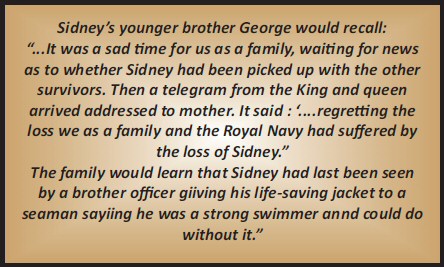 On New Years Eve Sidney’s mother and younger brother George attended the traditional church service while Sidney had put too sea. ‘Eternal Father Strong to Save’ the mariners him appeared in the service. On the night of New Years Eve, 31st December 1914, HMS Formidable, was the last ship in line of a fleet engaging in gunnery practice off the Devon coast. The seas were heavy and the weather foul. She had a crew of 780 men. Six battleships and two cruisers were sailing in line through Lyme Bay. HMS Formidable had developed engine trouble and was last in the line. Unknown to the navy the fleet was being shadowed by a German submarine. At 02:20 hours on 1 January 1915 a torpedo from U-24 struck the number one boiler port side. It was thought that she might be saved by reaching the coast but by about 02:40 she had taken a list of 20° to starboard and the Captain Noel Loxley gave the order to abandon ship. Darkness and worsening weather made it difficult to get the men and boats over the side; some small boats being thrown into the water upside down. At about 3:05am the Formidable was struck by a second torpedo on the starboard side. Amidst a 30 ft (9.1 m) swell the pinnaces and launch along with other boats (one of which capsized soon after) were launched and the two light cruisers came alongside and managed to pick up 80 men in the deteriorating weather. 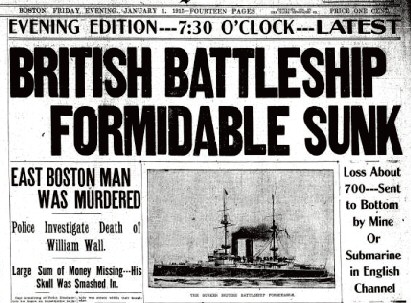 By 4:45am she seemed in imminent danger of capsizing and a few minutes later she rolled over falling onto many of the men in the water. Then in minutes she sank. Captain Loxley remained on the bridge along with his Fox terrier Bruce, calmly overseeing the evacuation of the ship. As the battleship sank they were to lose their lives together with 546 other officers and men of her complement of 780. At first there was a stunned disbelief that a battleship had been sunk so far within home waters and families waited anxiously in the following days to hear whether their loved ones were among those saved by vessels which had come to the rescue. The Bancroftian with the commencement of the Lent term of 1915 was later to acknowledge: Sidney’s body was never recovered from the sea |
Connecting Old Bancroftians with each other and Bancroft's School since 1910
